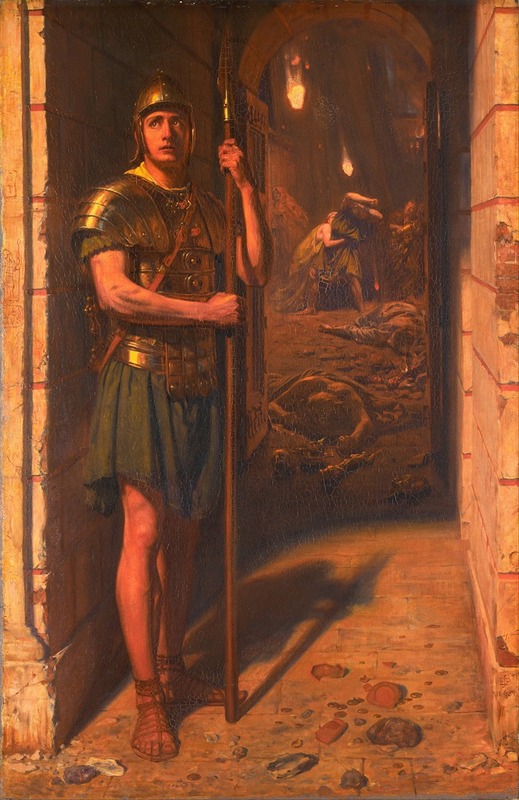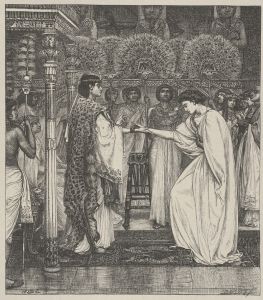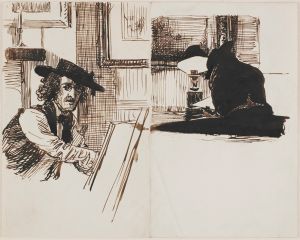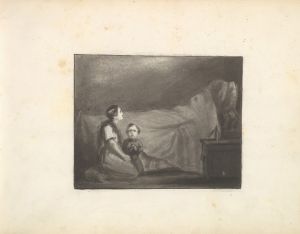
Faithful Unto Death
A hand-painted replica of Edward John Poynter’s masterpiece Faithful Unto Death, meticulously crafted by professional artists to capture the true essence of the original. Each piece is created with museum-quality canvas and rare mineral pigments, carefully painted by experienced artists with delicate brushstrokes and rich, layered colors to perfectly recreate the texture of the original artwork. Unlike machine-printed reproductions, this hand-painted version brings the painting to life, infused with the artist’s emotions and skill in every stroke. Whether for personal collection or home decoration, it instantly elevates the artistic atmosphere of any space.
"Faithful Unto Death" is a painting by the British artist Sir Edward John Poynter, completed in 1865. Poynter was a prominent figure in the Victorian art world, known for his historical and classical subjects. This particular work is one of his most renowned pieces and exemplifies his meticulous attention to detail and his ability to convey dramatic narratives through art.
The painting depicts a poignant scene set in ancient Rome. It shows a Roman soldier standing guard at his post during the eruption of Mount Vesuvius in 79 AD, which led to the destruction of the cities of Pompeii and Herculaneum. Despite the imminent danger and chaos surrounding him, the soldier remains steadfast and dutiful, embodying the Roman virtues of loyalty and bravery. The title "Faithful Unto Death" underscores the soldier's unwavering commitment to his duty, even in the face of certain death.
Poynter's work is characterized by its historical accuracy and attention to detail. In "Faithful Unto Death," he meticulously researched Roman military attire and architecture to ensure the authenticity of the scene. The soldier is depicted in traditional Roman armor, complete with a helmet, breastplate, and shield. The background features classical Roman architecture, partially obscured by the ash and smoke from the volcanic eruption, adding to the dramatic tension of the scene.
The painting was well-received upon its debut and has since been celebrated for its emotional depth and technical proficiency. It reflects the Victorian fascination with ancient Rome and the moral lessons that could be drawn from its history. Poynter's ability to capture a moment of intense human emotion and historical significance has made "Faithful Unto Death" a lasting piece of art that continues to be admired and studied.
"Faithful Unto Death" is housed in the Walker Art Gallery in Liverpool, England. The gallery is known for its extensive collection of fine art, and Poynter's painting is one of its highlights. The work remains an important example of Victorian historical painting and continues to be a subject of interest for art historians and enthusiasts alike.
In summary, "Faithful Unto Death" by Edward John Poynter is a masterful depiction of loyalty and bravery set against the backdrop of one of history's most famous natural disasters. Through his detailed and historically accurate portrayal, Poynter captures the essence of Roman virtue and the dramatic intensity of the moment, making it a significant work in the canon of 19th-century British art.


















